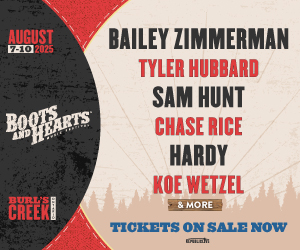
The Beatles' Get Back Shares The Love
The Fab Four’s long-awaited swan song is not what you think.
by Brad Simm
- Published on
Comedian Peter Sellers sits in on a candid conversation with John, Paul and Ringo along with members of a production crew. Curious to what the rambling chit-chat is all about he asks, “What are we discussing at this moment?” to which someone says, “the film.” To clarify, Lennon pipes up in his deadpan delivery, “It’s a documentary about how the Beatles work. We feel we shouldn’t keep it all to ourselves, we should spread it out, you know. We want to share with the world what we have.”
Five decades later, that sharing experience comes in the form of an eight-hour video, stripped down from some 60 hours of footage, then organized into three different sections showing exactly what Lennon had promised – an intimate, close-up document revealing how the Beatles operate. The year is 1969 and the camera zooms in on the making of their last album, Let It Be, as the band attempts to refocus their creative energies to “get back” to playing live together and releasing new music. The result is a slow drawn out swan song that saw the Fab Four disintegrate in the public eye — or so we’ve been told.
In 1966, when the Beatles stopped touring, they began their experimental period in the studio with Sergeant Pepper and the Magical Mystery Tour before the White Album spilled over in all directions, fracturing relationships in the band. As a remedy, McCartney initiated the idea of returning to their roots, writing and rehearsing new material in close quarters like they did in the early years, then performing the songs live on a one-hour TV special.
Rehearsals and filming began at a large, cavernous sound stage in Twickenham, which is where the first of Get Back’s three episodes take place. The atmosphere is a bit brooding, not a lot of energy or fun. Underlying tensions mount with Harrison walking out, feeling that Lennon and McCartney aren’t inclusive enough. After a five day hiatus in Liverpool, he returns on the condition they abandon the TV special, quit working at Twickenham, and relocate to their cozy new studio at EMI on Abbey Road.
Episode 2 is shot almost entirely in the basement of EMI where the pace picks up noticeably. Spirits are high, sleeves rolled up, the band seems happy and ready to get to work. And they do, bashing out song after song, going off on tangents while goofing around but still in full production mode. They then invite Billy Preston to play keyboards for the sessions. He alleviates some of Lennon’s duties and allows the band to rise up to an even higher level of good vibrations.
Rolling into Episode 3, the basement sessions continue as the songwriting really starts to take shape. There’s many wonderful segments where collaborations between the musicians unfold spontaneously, forming magic on the spot, which is what we often associate with the latter day Beatles. Some truly remarkable scenes. And when they finally climb to the rooftop of EMI’s building for their iconic last performance, the new songs drift down on the bewildered audience below who, both young and old, light up with smiles across their faces. One older gentleman, well into his 60s, sums up the sentiment: “I think the Beatles are cracking! I said, you can’t beat ‘em… And in my opinion, I think they’re a lovely crowd. They’ve got good qualities, they sing well. What else can I say? They’re real good people.”
The legacy behind the Beatles breakup often points to Yoko’s presence and interference in the band, George needing to strike out on his own, Paul’s controlling nature, and John not wanting to write pop songs any more. All of that may be true to varying degrees, but none of that discord comes through in the Get Back sessions. Outside the tiff Harrison had with his mates where he walks out for a few days, their month-long stretch in the studio was nothing but a sweet songwriting serenade.
While Lennon is clearly directing the show, he’s happy, funny, and a great band leader. And even though Yoko is literally attached to his hip sitting side-by-side in almost every scene, there’s absolutely no hint of resentment that she’s there. In fact, the band is extremely polite and professional to each other throughout the film, even when tensions creep in. At certain points you wonder, “Are they that well mannered and know how to behave properly in front of a camera? Are they just good showmen?” But their pleasant and positive nature never wavers, and by the time their creative juices are really flowing in the last episode, you can only marvel… Yes, the Beatles really were absolutely fabulous!
By Prabhjot Bains
From Wes Anderson’s pastel precision to Brad Pitt’s need for speed, here is what to watch in June.
By Prabhjot Bains
The (allegedly) final mission exhausts the franchise’s goodwill and contains some of its greatest moments.



















